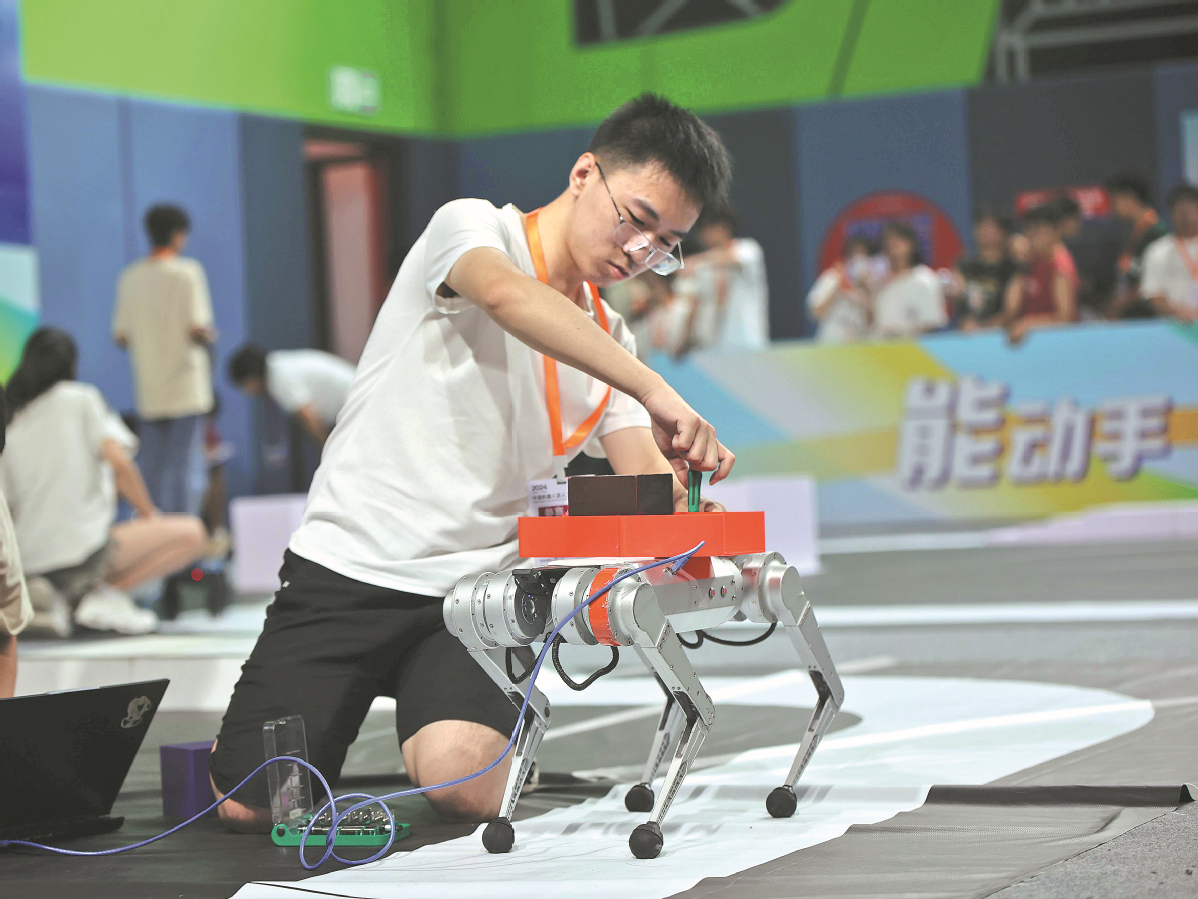AGP China Technology Report - Autonomous Mobile Robots (AMRs)
Table of Contents
Page Section
03 Technology Overview
08 Historical Development Timeline
11 Product Differentiation
15 China Technology Ecosystem
19 Sino-Foreign Collaboration
22 Common Applications In China
28 Government Policy Support
31 Impact On Market Incumbents
33 Final Conclusion
34 Appendices
1.1 Global Snapshot
Definition and Classification
Autonomous Mobile Robots (AMRs) are self-navigating robots capable of understanding and moving through their environment without human intervention. Unlike Automated Guided Vehicles (AGVs), which rely on fixed paths, AMRs utilize advanced sensors and artificial intelligence (AI) to interpret their surroundings and make real- time decisions. They are primarily categorized into:
- Goods-to-Person Picking Robots: Designed to transport items directly to human operators, enhancing picking efficiency.
- Self-Driving Forklifts: Automated forklifts that handle material transport tasks within warehouses and manufacturing facilities.
- Autonomous Inventory Robots: Robots equipped with scanning technologies to manage and monitor inventory levels.
- Unmanned Aerial Vehicles (UAVs): Drones used for tasks such as inventory management and surveillance in large facilities.
Key Technologies
The functionality of AMRs is underpinned by several core technologies:
- Actuators: Components responsible for movement, including wheels and robotic arms, enabling precise navigation and manipulation.
- Sensors: Devices such as LiDAR, cameras, and ultrasonic sensors that provide real-time data about the robot's environment.
- Artificial Intelligence and Machine Learning: Algorithms that process sensor data to facilitate autonomous decision-making and adaptive learning.
- Power Systems: Energy sources, predominantly lithium-ion batteries, that supply the necessary power for operations.
Global Benchmarks and Market Metrics
Leading AMR models include:
- Boston Dynamics' Stretch: A robot designed for warehouse operations, capable of handling a variety of packages with advanced mobility.
- Locus Robotics' LocusBot: An AMR optimized for e-commerce fulfillment centers, enhancing picking efficiency and accuracy.
Recent funding rounds highlight the sector's growth:
- Locus Robotics secured $150 million in Series E funding in 2023, valuing the company at $1 billion.
- Fetch Robotics was acquired by Zebra Technologies for $290 million in 2021, indicating significant investment in AMR capabilities.
Key performance indicators (KPIs) for AMRs include:
- Degrees of Freedom (DOF): Typically ranging from 3 to 6, allowing for versatile movement and task execution.
- Runtime: Operational durations between 8 to 12 hours per charge, depending on the application and load.
- Payload Capacity: Varies from 50 kg for smaller models to over 1,000 kg for industrial applications.
The global AMR market has experienced substantial growth:
- Market Size: Valued at $3.36 billion in 2023, projected to reach $6.94 billion by 2028, with a CAGR of 15.6%.
1.2 China Snapshot
Market Position and Domestic Capabilities
China has emerged as a significant player in the AMR industry, leveraging its manufacturing prowess and technological advancements. In 2024, the Chinese AMR market generated revenue of $389.4 million, with projections estimating growth to $864.7 million by 2030, reflecting a CAGR of 13.9%.
Domestic capabilities are bolstered by advancements in core components:
- Harmonic Drives: Chinese manufacturers have developed cost-effective harmonic drives, reducing reliance on imports and lowering production costs.
- LiDAR Sensors: Local companies are producing high-quality LiDAR sensors, essential for AMR navigation, at competitive prices.
Leading Firms and Product Deployments
Prominent Chinese AMR companies include:
- Geek+: Specializes in goods-to-person robots, with deployments in major e-commerce warehouses.
- Hikrobot: Offers a range of AMRs for logistics and manufacturing applications.
- ForwardX Robotics: Focuses on vision-based AMRs for flexible material handling.
Product pricing varies based on capabilities:
- Entry-Level Models: Priced around $20,000, suitable for small-scale operations.
- Advanced Models: Can exceed $50,000, offering higher payloads and advanced navigation features.
Representative deployments encompass:
- E-commerce Warehouses: AMRs are extensively used to streamline order fulfillment processes.
- Manufacturing Facilities: Deployed for material transport, reducing labor costs and increasing efficiency.
National Policies and Industrial Targets
The Chinese government has implemented policies to promote robotics and automation:
- Made in China 2025: A strategic plan aiming to upgrade the manufacturing sector, with a focus on high- tech industries, including robotics.
- MIIT Guidelines: The Ministry of Industry and Information Technology has set targets for increasing the adoption of intelligent manufacturing equipment.
These initiatives emphasize the development of indigenous technologies and aim to position China as a global leader in robotics.
Cost-Performance Edge and Application Scaling
China's cost-performance advantage is evident in:
- Economies of Scale: Mass production capabilities reduce unit costs.
- Supply Chain Integration: Proximity to component manufacturers streamlines production processes.
This advantage facilitates the scaling of AMR applications across various sectors, including:
- Logistics: Enhancing efficiency in distribution centers.
- Healthcare: Assisting in hospital logistics and patient care.
- Retail: Automating inventory management and restocking processes.
Alignment with National Goals
AMRs contribute to China's strategic objectives by:
- Addressing Demographic Shifts: Mitigating labor shortages due to an aging population.
- Industrial Upgrading: Facilitating the transition to smart factories with automated processes.
- Enhancing Productivity: Aligning with the goal of increasing manufacturing efficiency and global competitiveness.
AGP Insights
Download PDF.
Your PDF report was sent successfully to your inbox!
Related Insights.











